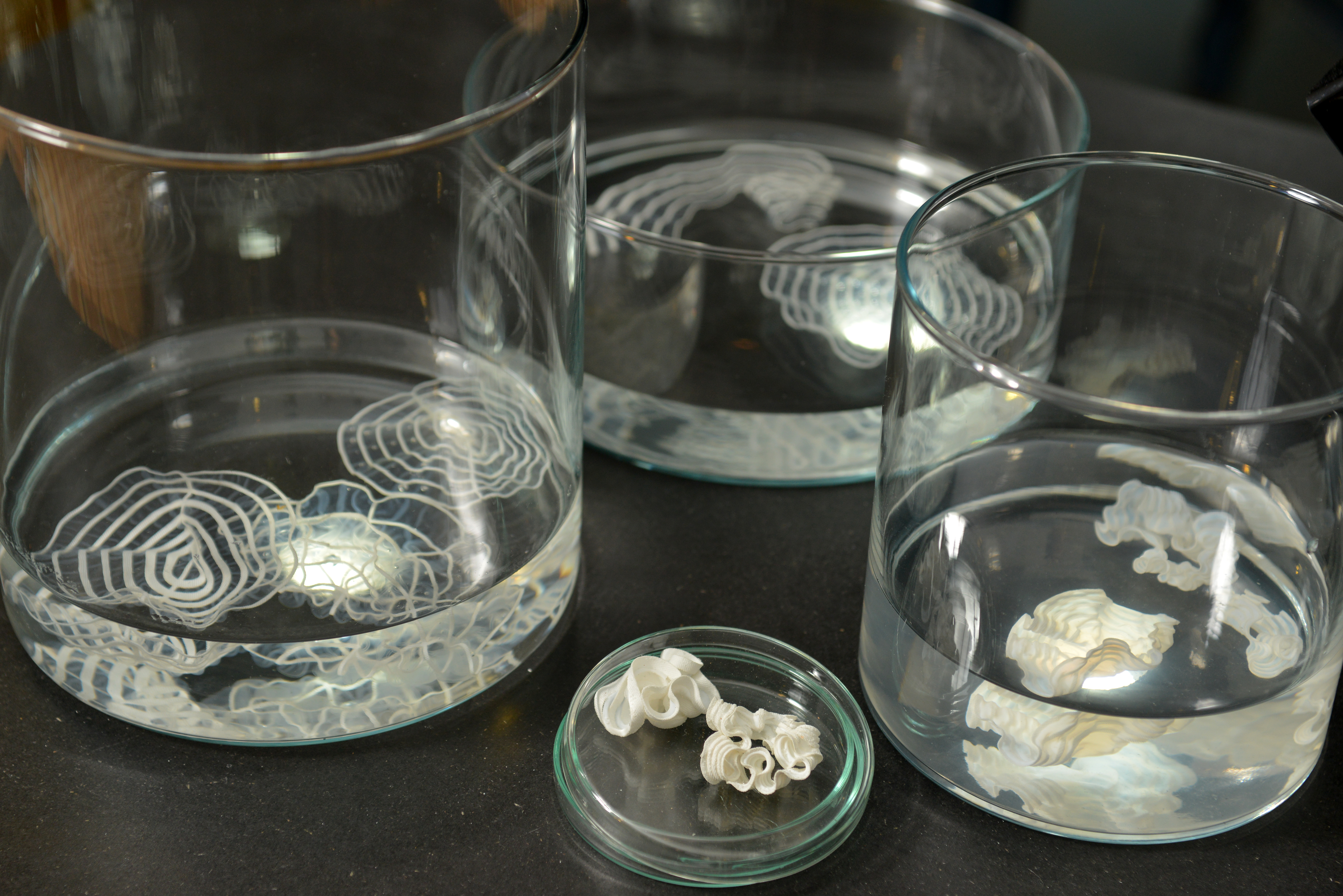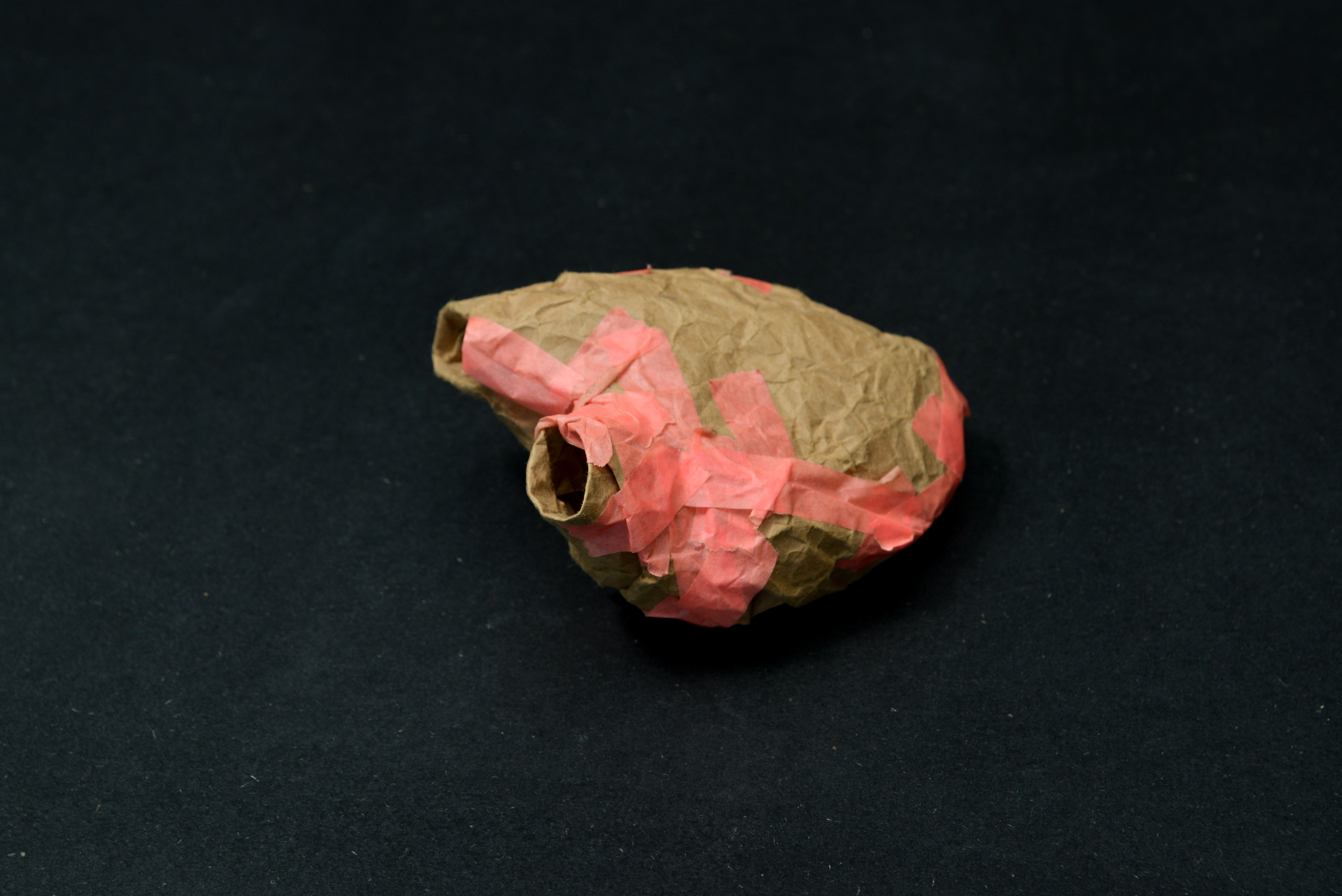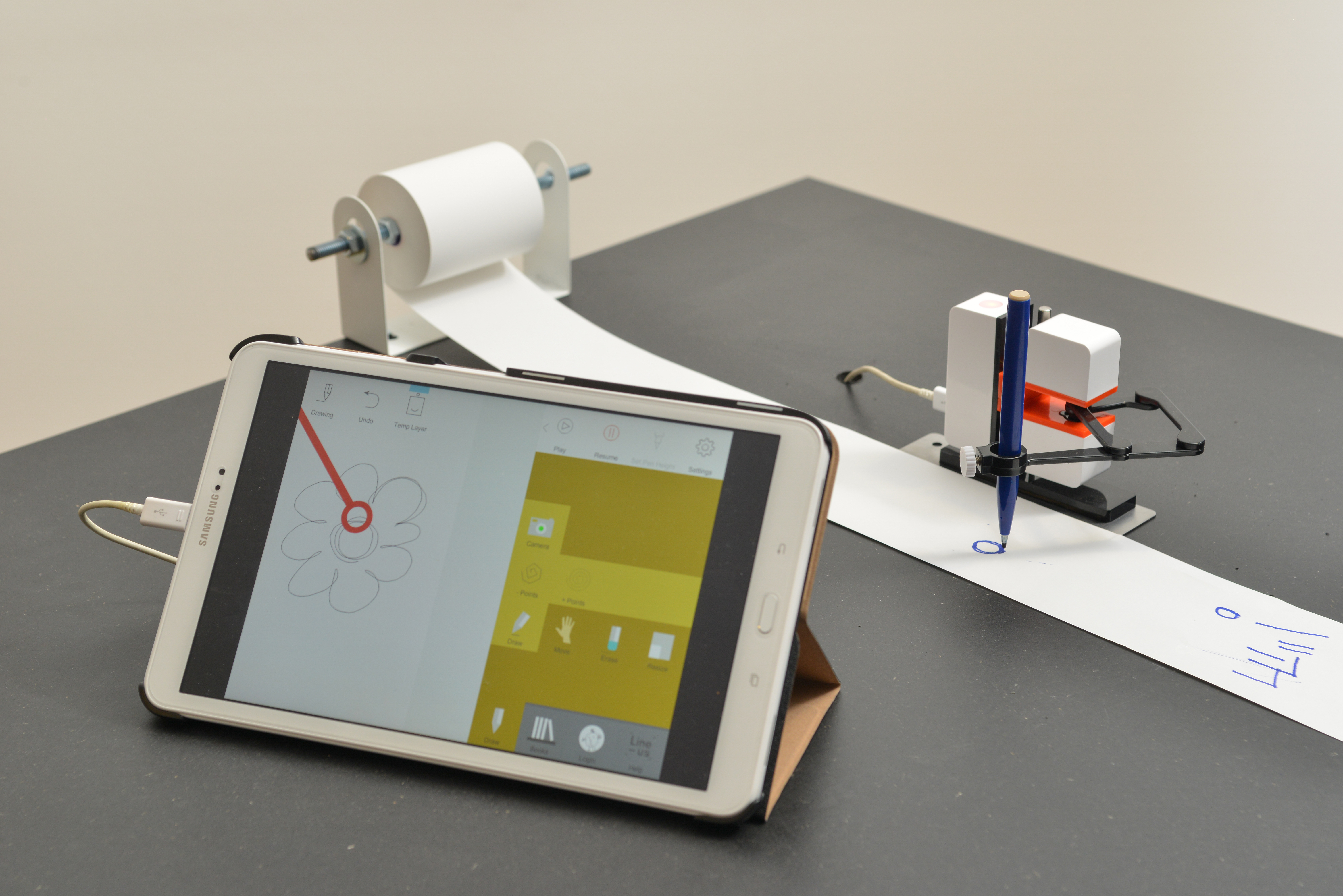Hovering, jumping, self-inflating forms that appear to be breathing.
Boldly colored forms that appear highly tangible yet are in fact flat, at once
familiar and strange.
The “uncanny” (Das Unheimliche) is a Freudian term describing the sense that arises when we come upon phenomena that blur the line between the real and the imagined, the organic and the non-organic, the human and the non-human, giving rise to a paradoxical combination of strange and familiar elements.
In 1970, the Japanese professor Masahiro Mori used this term in order to define a phenomenon in the field of robotics and computer graphics. Mori demarcated the intermediate zone between a robot or digital version of a human figure and between a living, healthy human being. The gap experienced between a human being and a figure that almost exactly resembles a human being gives rise to an uncomfortable sense that something is wrong or suspect. Mori called this twilight zone “The Uncanny Valley.”
Everyday human experience moves between the physical spaces we inhabit in the here-and-now and the infinite digital and virtual spaces created by computer animation, robotics, video games, and applications such as Snapchat, which involve elements of an augmented reality. Systems for scanning the body and space have become interfaces and tools for deconstructing, preserving, and creating human and biological forms. Models, simulations, and artificial intelligence assistants reexamine our relationships to the natural and biological worlds, and especially to space, time, and matter. Rapidly developing digital imaging and other technologies analyze bodily and material phenomena; light and skin, fluids, cells and hair, physical characteristics and traits, are painstakingly translated into digital data.
The works featured in the exhibition are divided into sections pertaining to space, body, and material, which are located at different imaginary and conceptual points in the Valley of the Uncanny. Some of them resemble familiar images and reveal their uncanny and sometimes even threatening aspect only when subjected to a scrutinizing gaze; in other cases the process is inverted, as unfamiliar objects or forms come to reveal familiar materials, images, or affiliations.
A strange material takes on the characteristics of the human body; the mechanical quality of a robotic arm underscores its “cuteness”; and our digital appliances reveal the testimonies of the people who worked to assemble them. Layers of material, perception and meaning accumulate by means of objects, visual representations, and simulations, as familiar and strange elements take on an uncanny appearance.
The “uncanny” (Das Unheimliche) is a Freudian term describing the sense that arises when we come upon phenomena that blur the line between the real and the imagined, the organic and the non-organic, the human and the non-human, giving rise to a paradoxical combination of strange and familiar elements.
In 1970, the Japanese professor Masahiro Mori used this term in order to define a phenomenon in the field of robotics and computer graphics. Mori demarcated the intermediate zone between a robot or digital version of a human figure and between a living, healthy human being. The gap experienced between a human being and a figure that almost exactly resembles a human being gives rise to an uncomfortable sense that something is wrong or suspect. Mori called this twilight zone “The Uncanny Valley.”
Everyday human experience moves between the physical spaces we inhabit in the here-and-now and the infinite digital and virtual spaces created by computer animation, robotics, video games, and applications such as Snapchat, which involve elements of an augmented reality. Systems for scanning the body and space have become interfaces and tools for deconstructing, preserving, and creating human and biological forms. Models, simulations, and artificial intelligence assistants reexamine our relationships to the natural and biological worlds, and especially to space, time, and matter. Rapidly developing digital imaging and other technologies analyze bodily and material phenomena; light and skin, fluids, cells and hair, physical characteristics and traits, are painstakingly translated into digital data.
The works featured in the exhibition are divided into sections pertaining to space, body, and material, which are located at different imaginary and conceptual points in the Valley of the Uncanny. Some of them resemble familiar images and reveal their uncanny and sometimes even threatening aspect only when subjected to a scrutinizing gaze; in other cases the process is inverted, as unfamiliar objects or forms come to reveal familiar materials, images, or affiliations.
A strange material takes on the characteristics of the human body; the mechanical quality of a robotic arm underscores its “cuteness”; and our digital appliances reveal the testimonies of the people who worked to assemble them. Layers of material, perception and meaning accumulate by means of objects, visual representations, and simulations, as familiar and strange elements take on an uncanny appearance.





